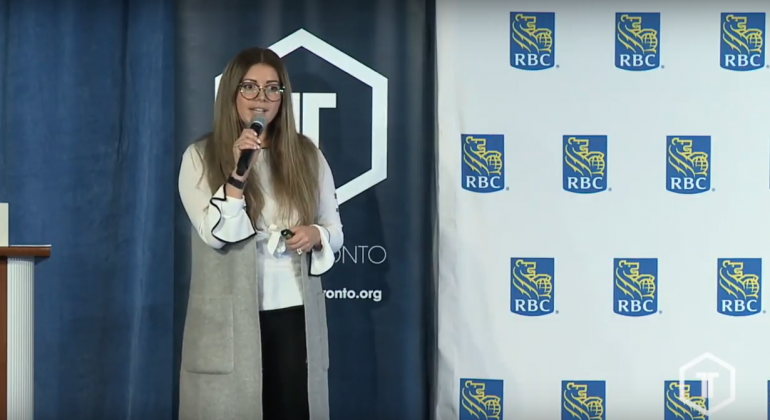At the latest TechTO, Dalia Asterbadi, CEO of Verve.ai, talked about the disruption AI and tech in general is creating, and the five-value creation process that needs to evolve to catch up.
Asterbadi has been working in the tech world for many years with a focus on neural networking in 2006, and machine learning in 2012. She currently runs Verve.ai, a SaaS platform that traces the digital breadcrumbs of brands and customers, and develops reports so adjustments can be applied to campaigns.
“Words like technology, AI, and machine learnings are actually talking about function.”
– Dalia Asterbadi
She identifies as someone who is rallying behind the ecosystem to build sustainable businesses.
“Currently what we do with our customers is, we really just put them through a crawl, walk, run. I talk a lot about getting AI-ready. For any of you who actually employ AI, it’s not really scalable, you can’t put it in a box. If you try, it’s not really creating value,” Asterbadi said.
She outlined the five value creation processes including experience, engagement, motivation, networks and moments, and customer speed and life, which she believes are the biggest disruption.
“Words like technology, AI, and machine learnings are actually talking about function. Our value creation process is really shifting, and technology is acting as an enabler. Value creation is really about changing the behaviour of customers. It’s a really complex problem that both startups and enterprises find,” she said.
Asterbadi highlighted Netflix, Starbucks, and Whole Foods as companies that are meeting the requirements of the new value creation process. She argues that startups, as well as enterprises, should be asking questions about brand creation, operations, and data modelling.
For Asterbadi, innovation can’t be built in silos; it’s not actually a technology problem, it’s a complex process problem.
“If you look at every enterprise prior to 1986 when the automation boom happened, every business and every person involved in the business was connected with the outcomes of the business. If you look at what’s happening now, there’s a struggle because everyone is trying to innovate within these silos and not creating a bridge,” she said. “One example of being ahead is tapping into unstructured data and taking away the metrics of our traditional world.”
See Asterbadi’s full story in the video below:


